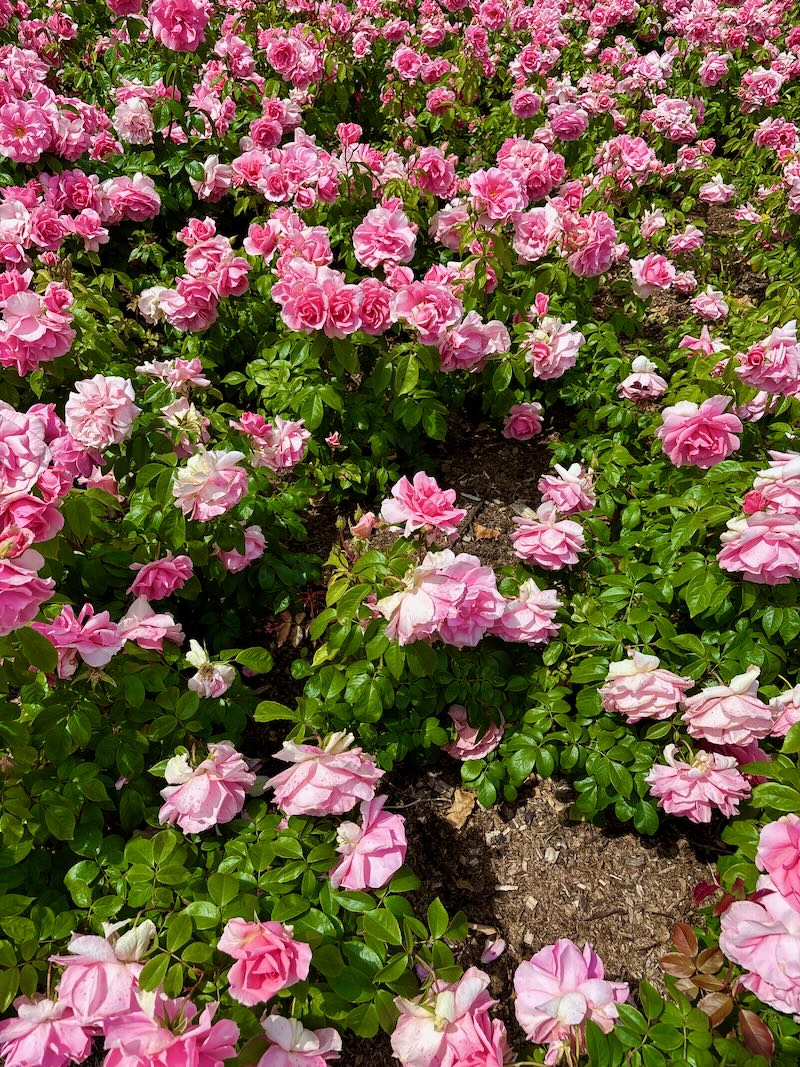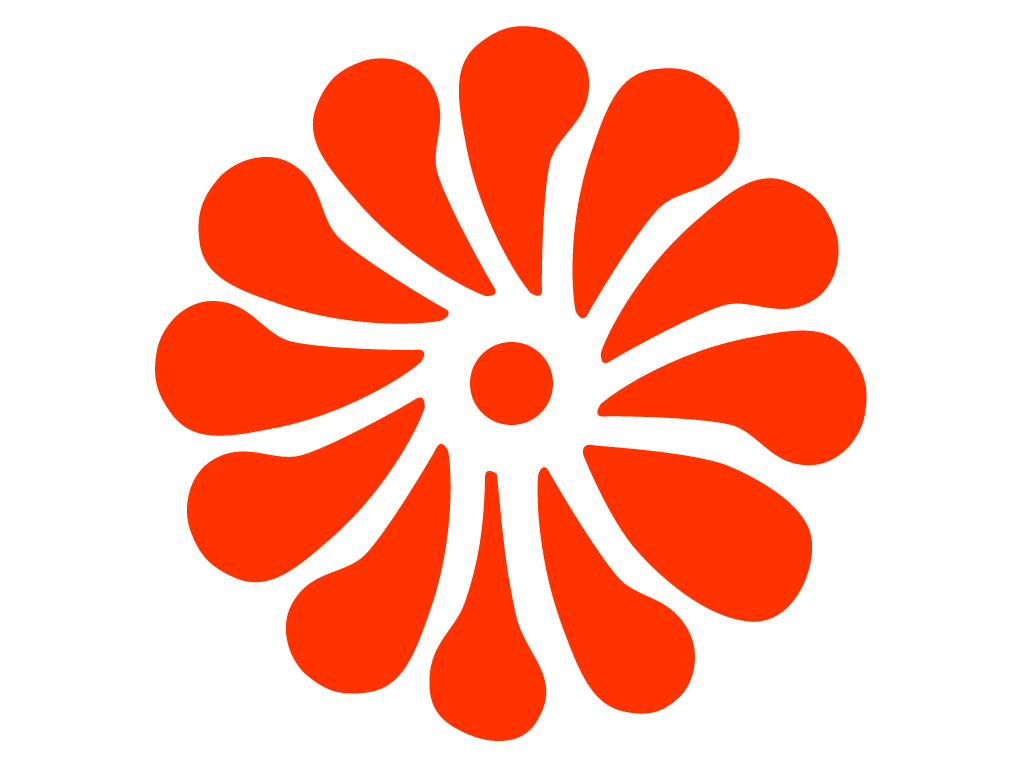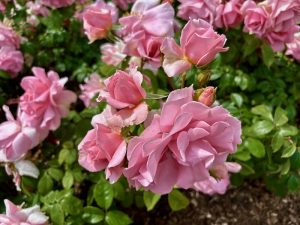Rosa ‘You’re Beautiful’ (Floribunda): nonstop pink clusters with award-winning health
Rosa ‘You’re Beautiful’ is a compact, free-flowering Floribunda that earns its place in any garden with constant trusses of soft, bright pink blooms. Bred by Gareth Fryer and registered as ‘Fryracy’, this modern rose combines classic, ruffled flowers with glossy, healthy foliage and excellent disease resistance. Gardeners also know it as You’re Beautiful Rose and Floribunda Rose ‘You’re Beautiful’. It belongs to the Rosaceae family, the same group that gives us apples and cherries, yet it behaves like a tidy, hard-working shrub for borders, beds, patios, and containers. It was named Rose of the Year 2013 in the UK and later received the Royal Horticultural Society’s Award of Garden Merit, which signals reliable performance in real gardens.
Why choose Rosa ‘You’re Beautiful’
Choose this variety when you want abundant color with minimal fuss. The shrub stays neat and bushy, typically maturing 60–90 cm tall and wide (2–3 ft by 2–3 ft). It flowers in generous clusters from early summer until the first hard frosts. Each medium, double bloom shows 17–25 petals in an upbeat pink that reads clearly from a distance, while a light, pleasant fragrance invites you closer. Because the plant produces bloom after bloom on short stems along each cane, you see full trusses rather than single, isolated flowers. Moreover, the foliage remains a rich, dark green with a glossy sheen. That shine hints at robust leaf cuticles, which often goes hand in hand with good disease resistance.
Rosa ‘You’re Beautiful’ description and habit
Expect a rounded, upright habit with strong basal shoots. The shrub fills out quickly in spring and holds its shape through autumn with little intervention. Leaves emerge with a subtle bronzy tint, then turn deep green as they mature. The bloom color sits in the classic rose-pink range, never harsh, and it softens slightly as petals age on the plant. Trusses hold several flowers at once, so the shrub rarely looks bare between flushes. Because this Floribunda sets flowers on current season’s growth, it bounces back fast after pruning and keeps performing even after a hard deadheading.
Flowering season of Rosa ‘You’re Beautiful’
Bloom begins in late spring or early summer, depending on your climate, and continues in waves until cold weather shuts down growth. With regular deadheading, the plant resets quickly and presents new trusses within weeks. In long, warm seasons, you can enjoy color from June through October, sometimes longer in mild autumns. Cooler nights tend to intensify the pink, while midsummer heat may nudge petals toward a softer blush. Either way, the plant maintains a cheerful, garden-bright tone across the season.
Environmental tolerances and hardiness
This variety handles a wide range of garden soils and exposures. It prefers full sun but tolerates light shade, especially in hot regions where a few hours of afternoon shade protect petals and leaves. It grows well in typical garden loam, yet it also copes with heavier clay once you loosen the planting hole and add organic matter. After establishment, it tolerates short dry spells, though steady moisture improves flower size and frequency. In temperate climates it is fully hardy; however in many regions comparable Floribundas thrive in USDA Zones 5–9. In cold winters the shrub rests and rebounds strongly in spring. In maritime climates with cool summers, it holds color and form cleanly with minimal blemish.
Design and landscape uses with Rosa ‘You’re Beautiful’
Use this rose to anchor a small bed or repeat it along the front of a mixed border for rhythm and continuity. Its scale fits cottage gardens, townhouse plots, and courtyard borders where big Hybrid Teas feel overwhelming. The rounded habit lets you weave it between perennials such as Nepeta, Salvia, Lavandula, and hardy Geraniums.
It also shines in large containers—choose a pot at least 40–45 cm (16–18 in) wide so roots have room to run. Because trusses carry multiple stems suitable for small bouquets, you can snip a few sprays without spoiling the shrub’s display. For a cohesive scheme, pair it with silver foliage like Artemisia or Stachys to set off the pink, or add deep blues and purples to cool the palette during high summer.
How to Grow Rosa ‘You’re Beautiful’
Light
Plant it where it receives at least 6 hours of direct sun daily. Morning sun is essential because it dries dew quickly and reduces fungal pressure. In hot inland sites, give light afternoon shade to preserve petal color and reduce stress during heat waves. In bright coastal climates, full sun all day yields the most compact habit and the heaviest bloom.
Soil
Set it in fertile, well-drained soil. A pH between 6.0 and 7.0 suits roses well, yet this cultivar tolerates slightly acid through slightly alkaline ground. In heavy clay, mix in well-rotted compost to improve structure and drainage. In sandy soils, incorporate organic matter to hold moisture and nutrients. Because roses dislike waterlogged roots, avoid low basins where water collects after rain.
Watering
Water deeply and regularly in the first growing season to establish a broad root system. As a rule of thumb, supply about 10–15 L (2½–4 US gal) per shrub once or twice a week in dry weather, adjusting for temperature and rainfall. Thereafter, water when the top 5–7 cm (2–3 in) of soil dries. Always direct water to the soil, not the leaves. Early morning irrigation helps foliage dry quickly if it does get splashed.
Fertilizing
Feed for performance, but keep it balanced. In early spring, apply a slow-release rose fertilizer or top-dress with well-rotted compost around the drip line. After the first main flush, feed again to power the next wave. Stop fertilizing 6–8 weeks before your average first frost to avoid pushing soft growth into winter. If leaves pale midseason, supplement with a liquid feed that includes micronutrients such as iron and magnesium.
Planting and spacing
Plant bare-root shrubs in early spring while the soil is workable, or set container plants in spring or early autumn so roots settle before extreme heat or cold. Dig a hole twice as wide as the pot and as deep as the root ball. In colder regions, set the bud union (graft) 2–5 cm (1–2 in) below soil level for winter protection; in mild climates, place it at or just above the surface. Backfill with the native soil you improved with compost. Firm gently to remove air pockets, then water thoroughly. Space shrubs 45–60 cm (18–24 in) apart for a cohesive hedge or 75–90 cm (30–36 in) for individual specimens with air around them.
Mulching
Apply a 5–7 cm (2–3 in) mulch of compost, shredded bark, or leaf mold over the root zone. Mulch conserves moisture, moderates soil temperature, and discourages weeds. Keep mulch a few centimeters away from the canes to prevent rot. Renew mulch in late winter after your annual pruning and again lightly in midsummer if it thins.
Pruning
Prune in late winter or very early spring, just before buds break. First remove any dead, diseased, damaged, or crossing wood. Then reduce the remaining healthy canes by about one-third to one-half, cutting to outward-facing buds to keep the center open. During the season, deadhead promptly. Cut spent trusses back to the first strong, outward-facing five-leaflet leaf. This cue triggers new flowering shoots and keeps the shrub compact. If you miss a round of deadheading, do a light trim after that flush; the plant forgives minor lapses and resumes flowering quickly.
Propagation of Rosa ‘You’re Beautiful’
Home gardeners can propagate this rose from cuttings for personal use. Take semi-ripe cuttings in late summer from non-flowering shoots 10–12 cm (4–5 in) long. Remove lower leaves, keep two at the top, and insert the cuttings into a free-draining mix of perlite and peat or a sharp sand blend. Maintain high humidity and bright, indirect light until rooted. Hardwood cuttings in late autumn also succeed in many climates; stick pencil-thick shoots 15–20 cm (6–8 in) long into a trench of sandy soil outdoors and keep them barely moist through winter. For budding or grafting, use an appropriate understock and follow regional best practices. If plants in your region carry plant breeders’ rights, respect any local restrictions on commercial propagation.
Pests and diseases on Rosa ‘You’re Beautiful’
This cultivar carries strong genetic resistance and typically keeps foliage clean. Still, routine checks protect your investment. Aphids may cluster on tender tips in spring; wash them off with a firm water spray or treat with insecticidal soap. Greenhouse whitefly rarely attacks outdoor roses but can appear on nearby container plantings; sticky traps help monitor pressure. In warm spells, watch for rose sawfly larvae (rose slugs) on leaf undersides; remove by hand or treat with an appropriate product if needed.
For diseases, good culture beats cure. Site the shrub where air circulates, water at the base, and keep the canopy open with proper pruning. If black spot spots appear during a very wet season, remove affected leaves from the plant and the soil surface. A proactive spray program is optional; many gardeners grow ‘You’re Beautiful’ without fungicides. Powdery mildew sometimes dusts new growth in late summer during warm days and cool nights; prune lightly to promote airflow and keep irrigation even. In all cases, clean up leaf litter in autumn to reduce overwintering spores.
Rosa ‘You’re Beautiful’ as a cut flower
Cut sprays when the first buds in a cluster are half open. Harvest in the cool of early morning with clean, sharp shears. Strip foliage that would sit below the water line, then recut stems under water by 1–2 cm (½–¾ in). Condition in lukewarm water with floral preservative for two hours before arranging. Because trusses carry multiple blooms, one cut stem fills a small vase nicely. Indoors, expect several days of good vase life, longer in cool rooms out of direct sun.
Seasonal care calendar
In late winter, prune and mulch. As buds swell, apply your first feed and check irrigation lines or hoses. In spring, water deeply during dry spells and begin deadheading once the first flowers fade. Early summer calls for a second feed after the main flush. Keep the root zone mulched and soil evenly moist as temperatures climb. In late summer and early autumn, continue deadheading to push new trusses until frost. Six to eight weeks before your first expected freeze, stop fertilizing so canes harden. In cold climates, mound compost 15–20 cm (6–8 in) over the crown after the ground chills to protect the graft; pull it back in early spring as growth restarts.
Quick troubleshooting for Rosa ‘You’re Beautiful’
If flowers seem small or sparse, check light first. Move potted plants to full sun or thin nearby overgrowth. If leaves pale between veins, consider a feed that includes micronutrients and verify soil pH. When buds ball or fail to open in wet weather, improve air movement and avoid overhead watering. If canes throw long, leafy growth with fewer flowers, you may be using a high-nitrogen fertilizer; switch to a balanced product or one slightly higher in potassium after the first flush. Should the shrub outgrow its space, cut it back a little harder next winter; this Floribunda responds well to a firm, thoughtful prune.
Soil and site flexibility you can count on
Gardeners often ask how picky this rose is about soil. Fortunately, ‘You’re Beautiful’ adapts well. It grows in acid ground with rhododendrons and azaleas, yet it also copes with alkaline soils common in chalky districts. It even manages on heavier clay as long as you prepare the hole well and avoid standing water. Because the root system appreciates oxygen, aim for a crumbly structure rather than a dense, puddling mass. Regular additions of compost improve both moisture retention in sand and drainage in clay, which means more consistent growth and bloom.
Wildlife and pollinator notes
Bees visit the open, lightly scented blooms when outer petals reflex and the centers present accessible pollen. Hoverflies patrol for aphids and act as natural allies. While roses are not top nectar sources compared to native perennials, a long-blooming Floribunda supports insects during mid-summer gaps. If you garden for wildlife, avoid systemic insecticides during bloom and focus on cultural care, manual removal, and spot treatments with insecticidal soap when truly necessary.
Final notes for success
Plant Rosa ‘You’re Beautiful’ where you will pass it often. This is a rose that works hard without drama, covering itself in soft pink through months when many shrubs rest. Give it sun, a fertile, well-drained soil, and water deep rather than often. Feed in spring, prune with purpose, and deadhead to keep the show rolling. Because it stays compact, you can repeat it along a path, tuck it near a patio, or drop it into a favorite terrace pot. With its steady health, generous trusses, and friendly scale, You’re Beautiful Rose delivers exactly what its name promises—cheerful, confident color from summer to late autumn with very little fuss.



